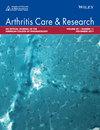Occupational and Hobby Exposures Associated With Myositis Phenotypes in a National Myositis Patient Registry
Abstract
Objective
The objective of this study was to investigate occupational and hobby exposures to silica, solvents, and heavy metals and the odds of having the idiopathic inflammatory myopathy (IIM) phenotypes dermatomyositis (DM) and polymyositis (PM) versus inclusion body myositis (IBM), lung disease plus fever or arthritis (LD+), and systemic autoimmune rheumatic disease–associated overlap myositis (OM).
Methods
The sample included 1,390 patients (598 with DM, 409 with PM, and 383 with IBM) aged ≥18 years from a national registry. Of these, 218 (16%) were identified with LD+, and 166 (12%) with OM. Of these, 218 (16%) were identified with LD+, and 166 (12%) with OM. We calculated adjusted odds ratios (ORs) and 95% confidence intervals (CIs) and explored joint effects with smoking.
Results
High silica exposure was associated with increased odds of having DM (OR 2.02, 95% CI 1.18–3.46, compared to no exposure; P trend = 0.004), LD+ (OR 1.75, 95% CI 1.10–2.78, vs no LD; P trend = 0.005), and OM (OR 2.07, 95% CI 1.19–3.61, P trend = 0.020). Moderate to high heavy metals exposure was associated with greater odds of having LD+ (OR 1.49, 95% CI 1.00–2.14, P trend = 0.026) and OM (OR 1.59, 95% CI 0.99–2.55, P trend = 0.051). Greater odds of having LD+ were seen among smokers with moderate to high silica exposure versus nonsmokers with low or no exposure (high-certainty assessment OR 2.53, 95% CI 1.31–4.90, P interaction = 0.061).
Conclusion
These findings, based on a systematic exposure assessment, suggest that occupational and hobby exposures to silica and heavy metals contribute to adult IIM phenotypes, including DM, OM, and LD+, a possible marker for antisynthetase syndrome or other autoantibody-associated lung diseases.


 求助内容:
求助内容: 应助结果提醒方式:
应助结果提醒方式:


